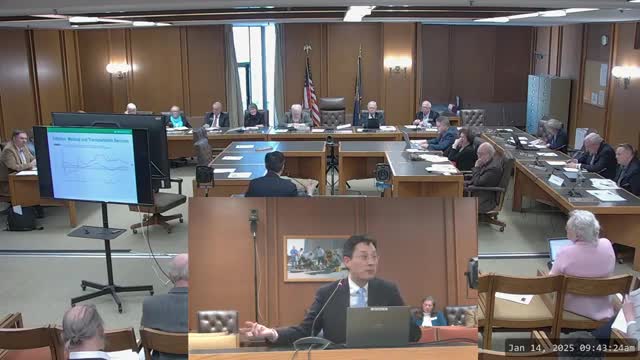Business groups tell Ways and Means childcare shortages and demographics limit labor supply
January 14, 2025 | Ways and Means, House of Representatives, Committees , Legislative, New Hampshire
This article was created by AI summarizing key points discussed. AI makes mistakes, so for full details and context, please refer to the video of the full meeting. Please report any errors so we can fix them. Report an error »

At the Ways and Means briefing, speakers tied the state’s labor‑force constraints directly to childcare availability and demographic trends.
Natesh Graves of the New Hampshire Business & Industry Association told members the BIA’s employer survey shows workforce availability and housing are the top constraints; he said 68% of employers listed childcare among their key priorities. Graves said employers were seeing prospective hires leave waiting lists for childcare and that some families stay out of the labor force because no local options exist.
Jess Williams of the New Hampshire Fiscal Policy Institute told the committee MIT and other living‑cost estimates put a two‑adult, one‑child working household’s living‑wage near $98,000 in 2024. She said childcare and housing together consume roughly one‑third of household budgets. NHFPI staff also cited U.S. Department of Housing and Urban Development definitions: more than 30% of income spent on shelter is a cost burden; more than half of renters in New Hampshire met that threshold in 2023.
Other details: presenters said the number of licensed child‑care providers has declined in some communities since 2019, producing wait lists and longer distances to available slots. A change in state rules allowing certain home‑based providers to serve one additional child (shifted from municipal to DHHS authority) has helped some capacity, but speakers said it is insufficient to meet demand.
Why it matters: Employers told the BIA they sometimes increase wages to recruit employees, but Graves warned that in a tight labor market wage increases alone might not expand the available pool of labor if structural constraints — housing and childcare — prevent people from taking jobs. Phil Sletten of NHFPI emphasized that older demographic cohorts mean the state will rely heavily on migration and retention of prime‑age workers to meet employer needs.
Ending: presenters encouraged the committee to consider policy levers that address childcare supply (provider grants, scholarship and subsidy program design) and to coordinate housing and workforce strategies so that state investments help employers and families alike.
Natesh Graves of the New Hampshire Business & Industry Association told members the BIA’s employer survey shows workforce availability and housing are the top constraints; he said 68% of employers listed childcare among their key priorities. Graves said employers were seeing prospective hires leave waiting lists for childcare and that some families stay out of the labor force because no local options exist.
Jess Williams of the New Hampshire Fiscal Policy Institute told the committee MIT and other living‑cost estimates put a two‑adult, one‑child working household’s living‑wage near $98,000 in 2024. She said childcare and housing together consume roughly one‑third of household budgets. NHFPI staff also cited U.S. Department of Housing and Urban Development definitions: more than 30% of income spent on shelter is a cost burden; more than half of renters in New Hampshire met that threshold in 2023.
Other details: presenters said the number of licensed child‑care providers has declined in some communities since 2019, producing wait lists and longer distances to available slots. A change in state rules allowing certain home‑based providers to serve one additional child (shifted from municipal to DHHS authority) has helped some capacity, but speakers said it is insufficient to meet demand.
Why it matters: Employers told the BIA they sometimes increase wages to recruit employees, but Graves warned that in a tight labor market wage increases alone might not expand the available pool of labor if structural constraints — housing and childcare — prevent people from taking jobs. Phil Sletten of NHFPI emphasized that older demographic cohorts mean the state will rely heavily on migration and retention of prime‑age workers to meet employer needs.
Ending: presenters encouraged the committee to consider policy levers that address childcare supply (provider grants, scholarship and subsidy program design) and to coordinate housing and workforce strategies so that state investments help employers and families alike.
View full meeting
This article is based on a recent meeting—watch the full video and explore the complete transcript for deeper insights into the discussion.
View full meeting
